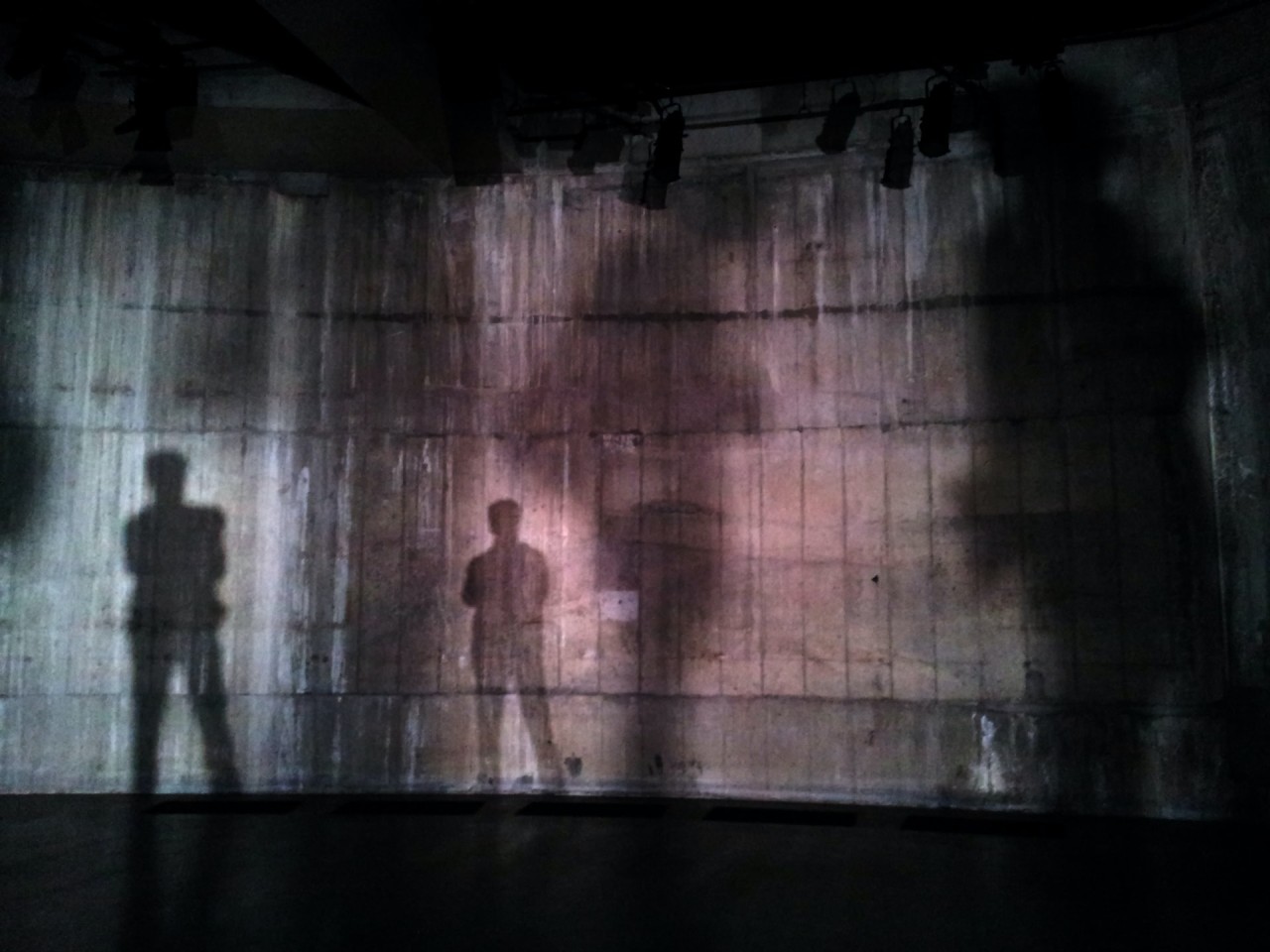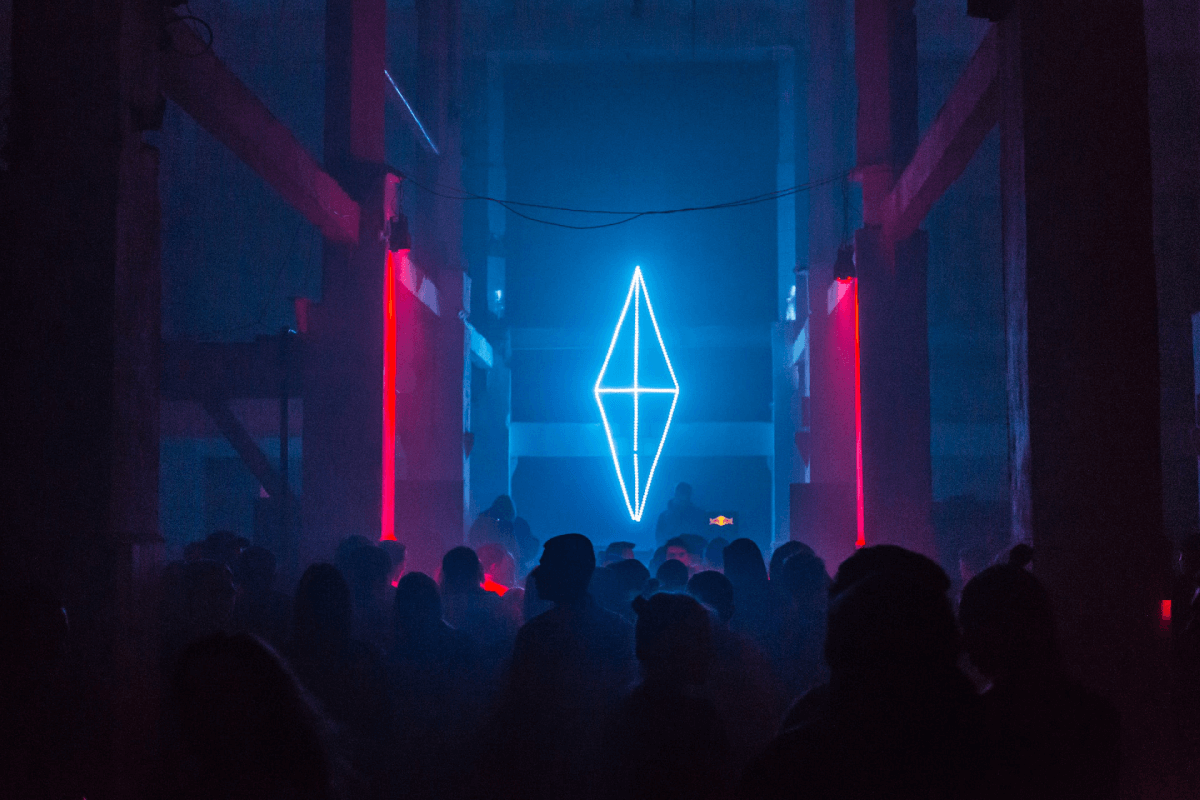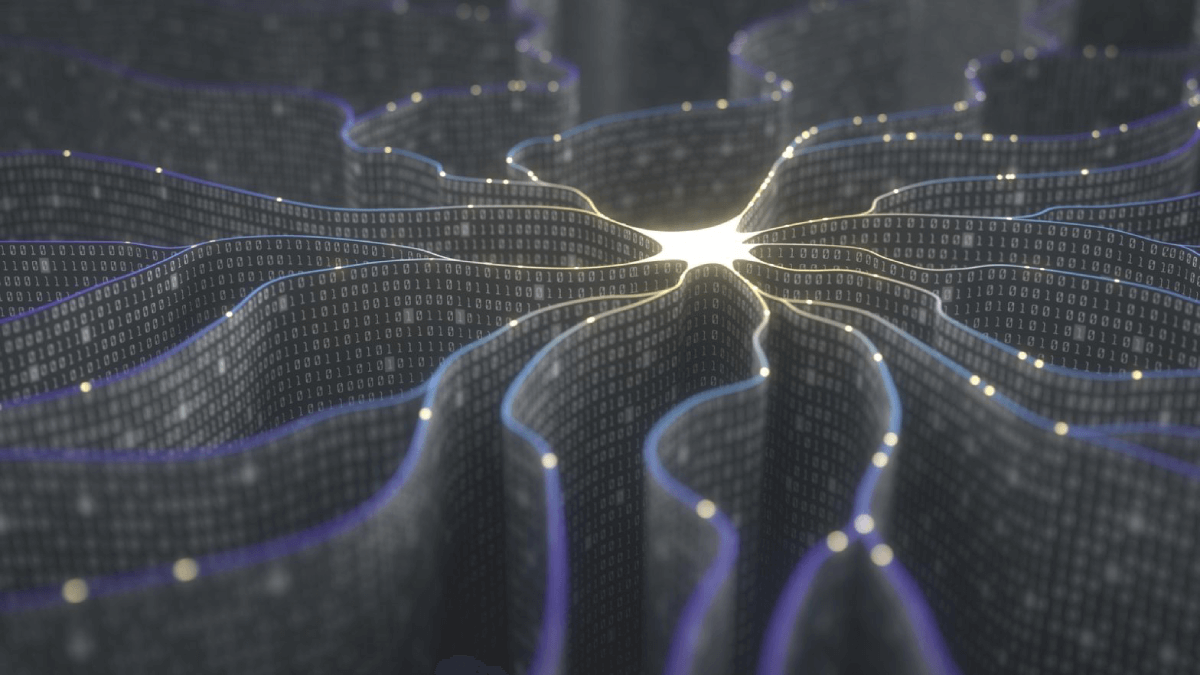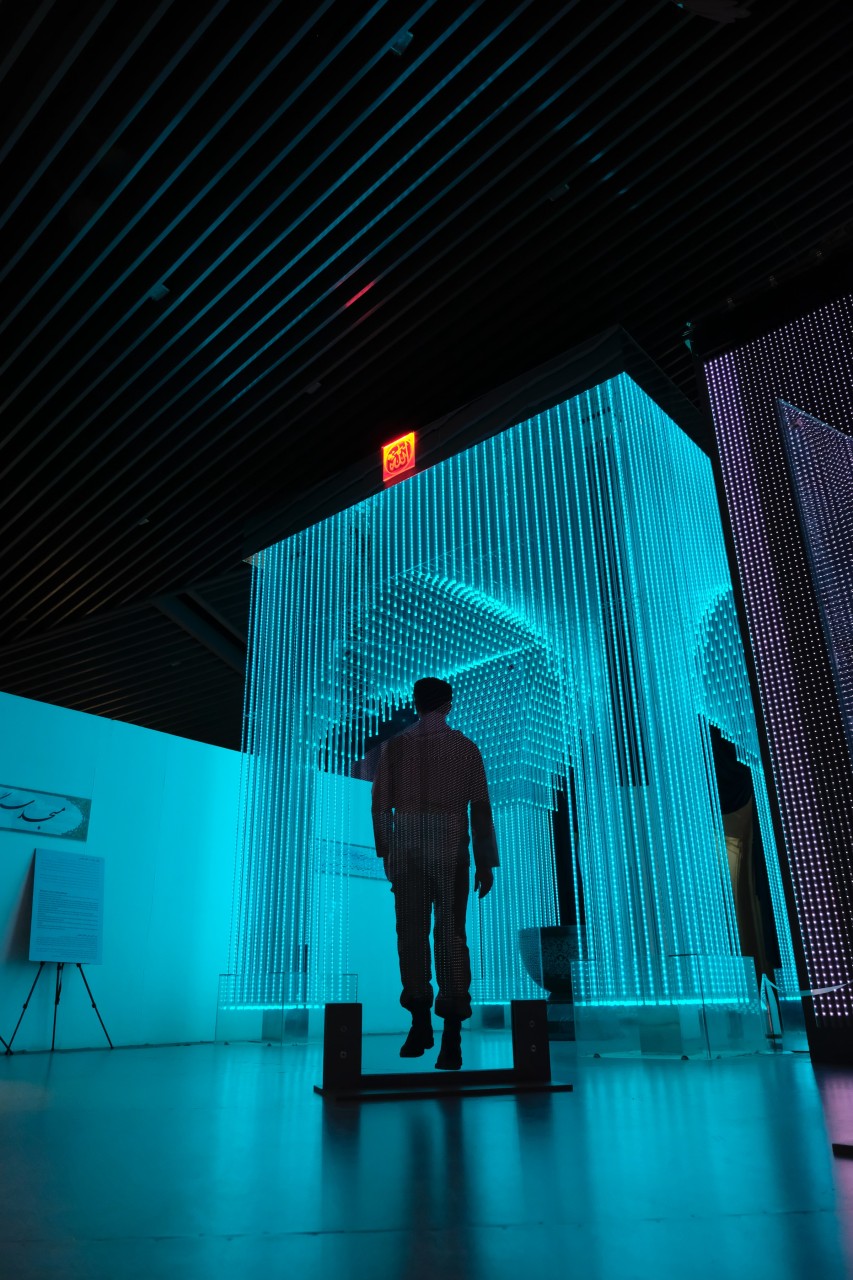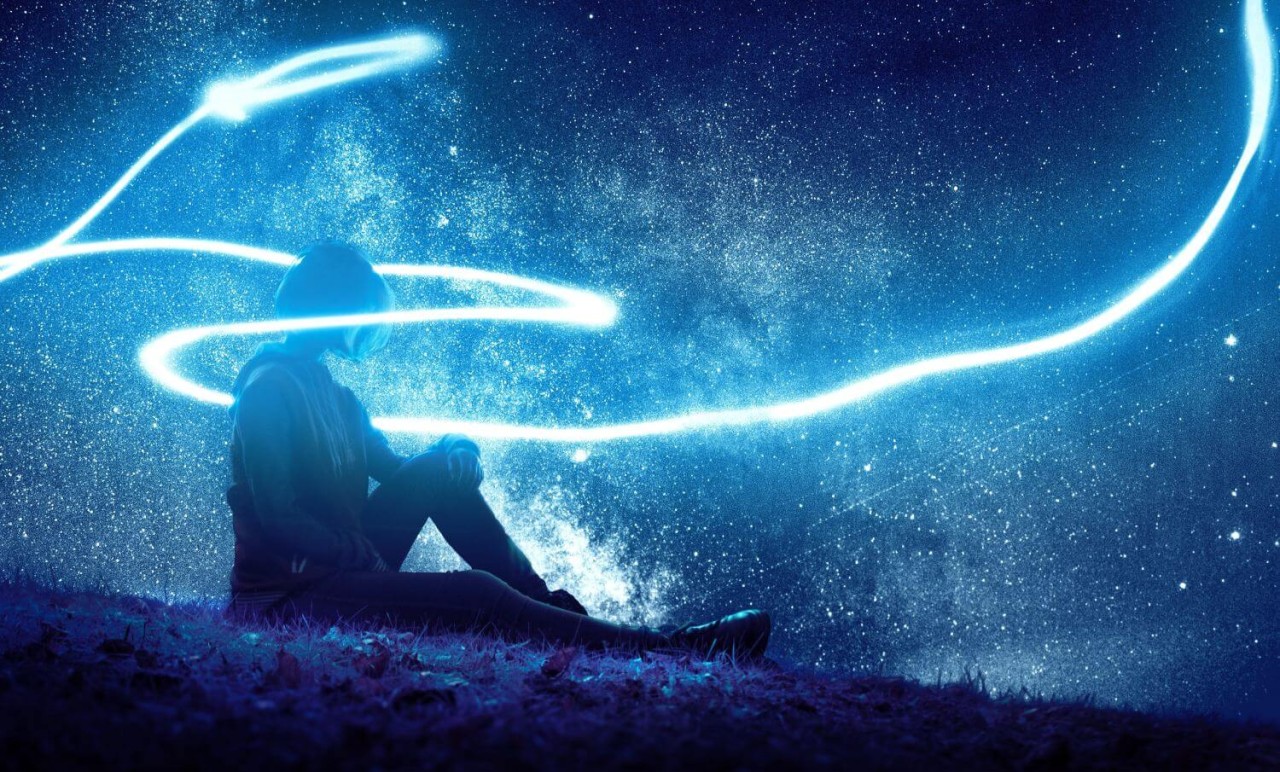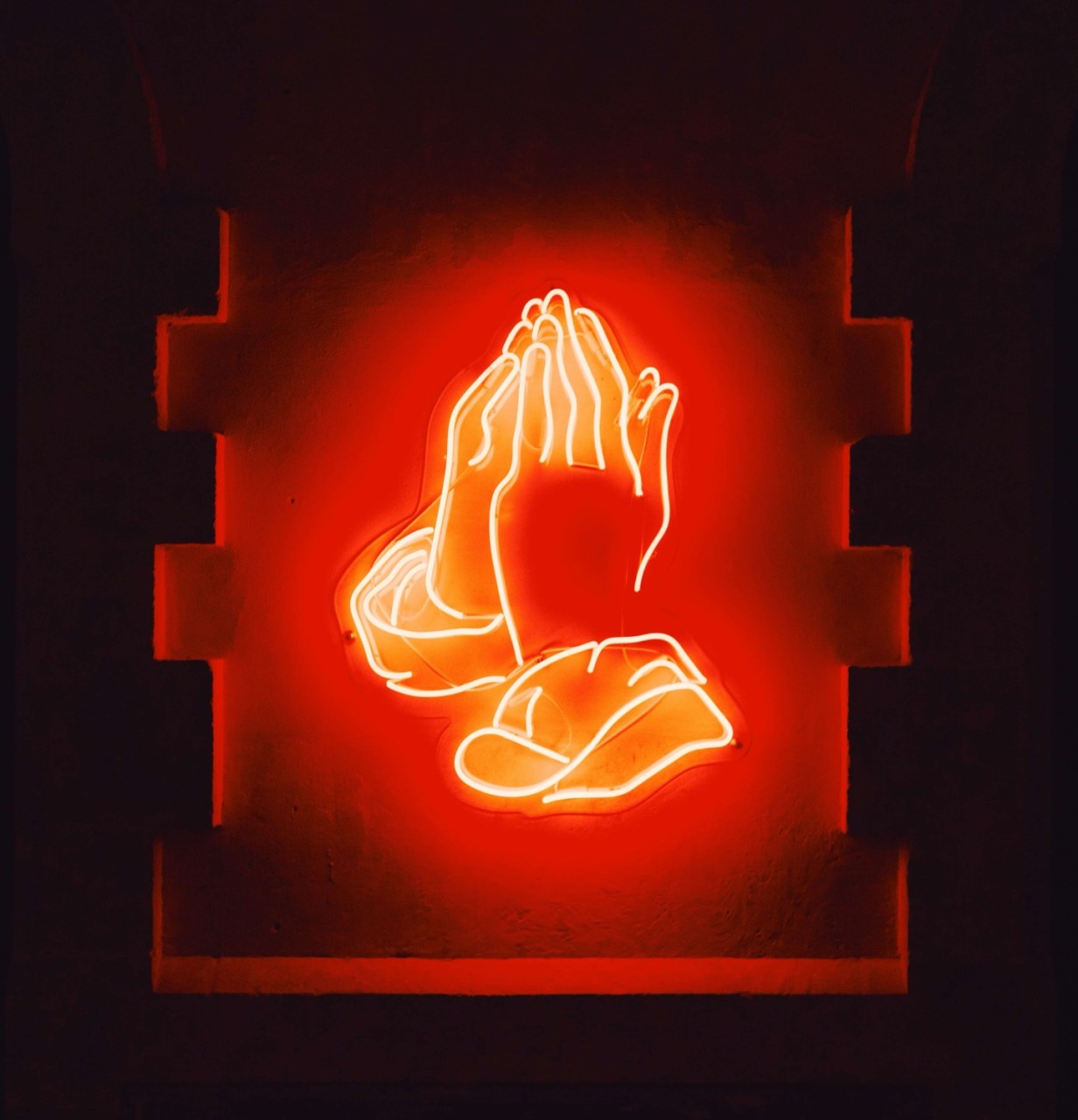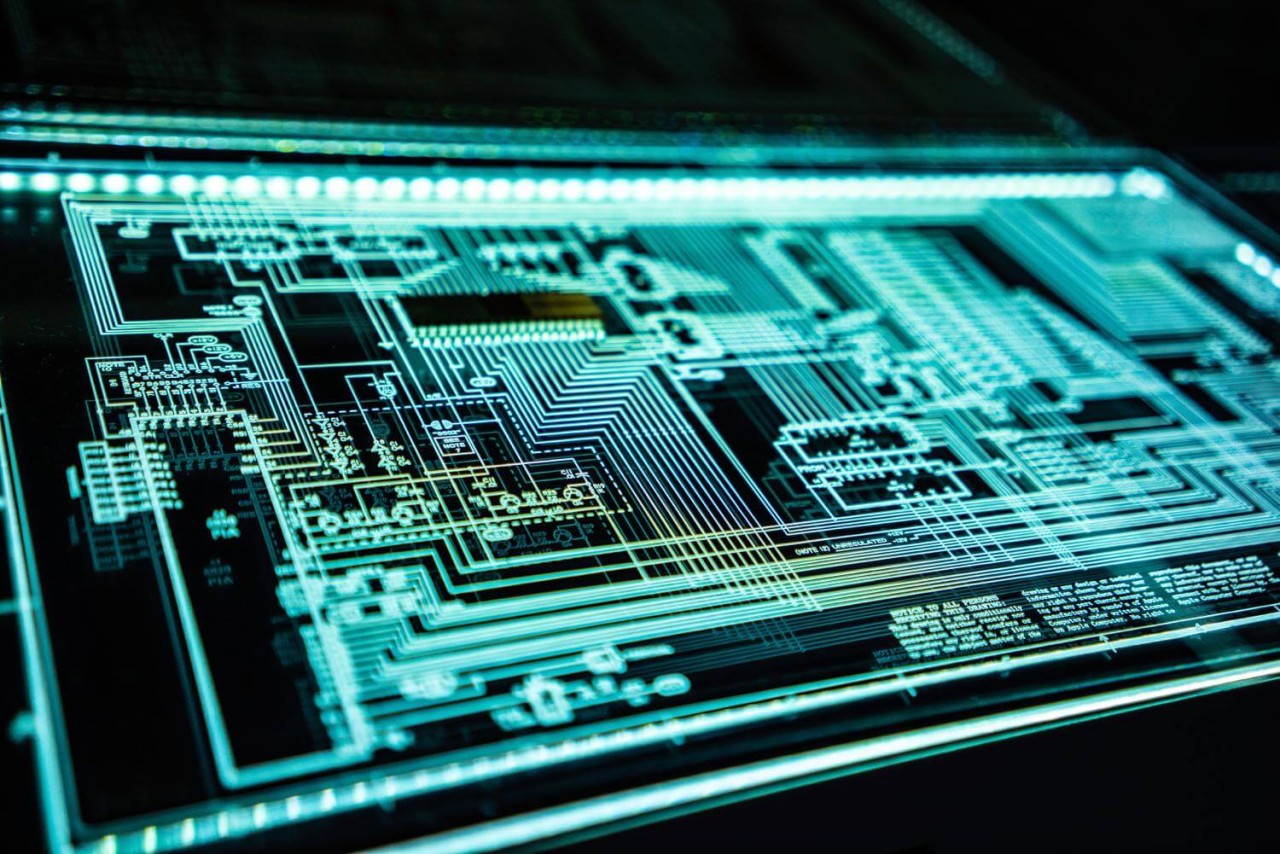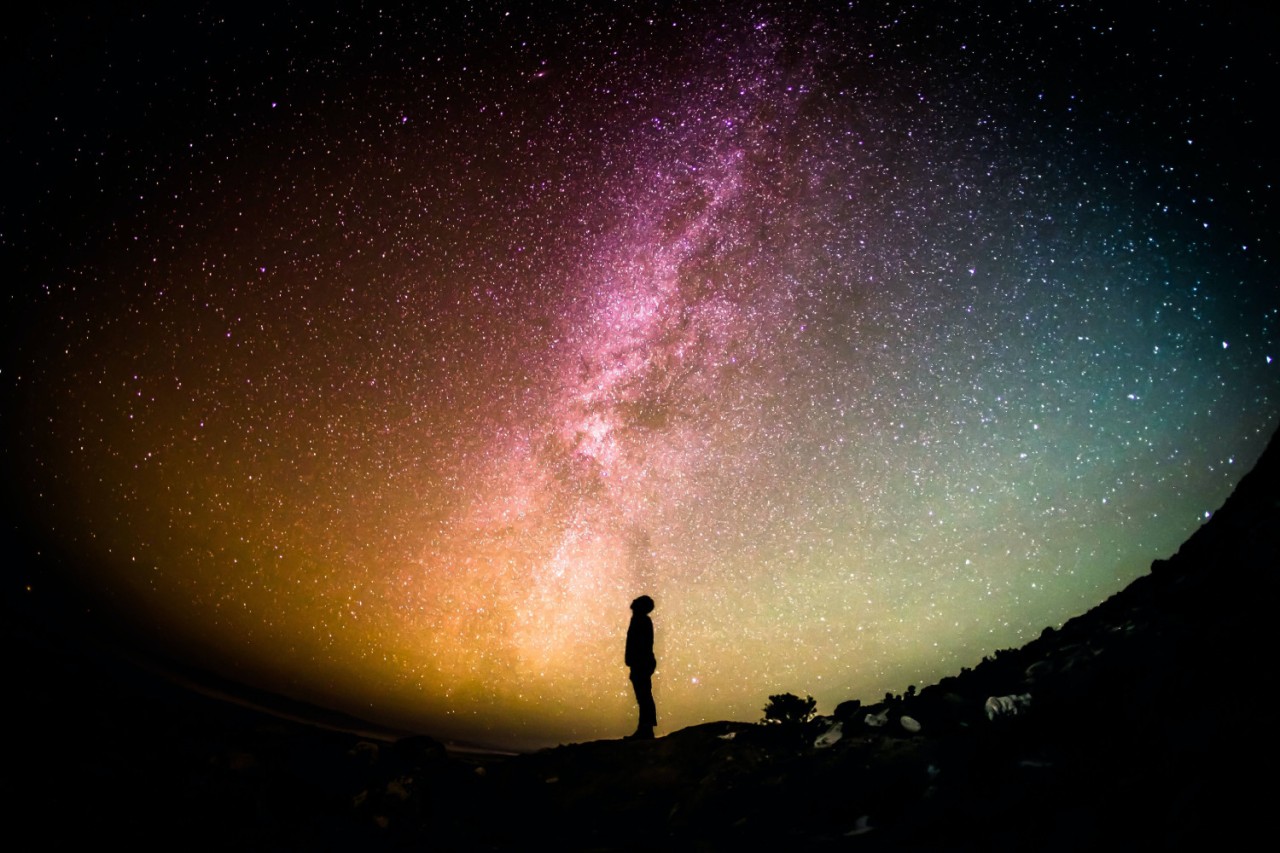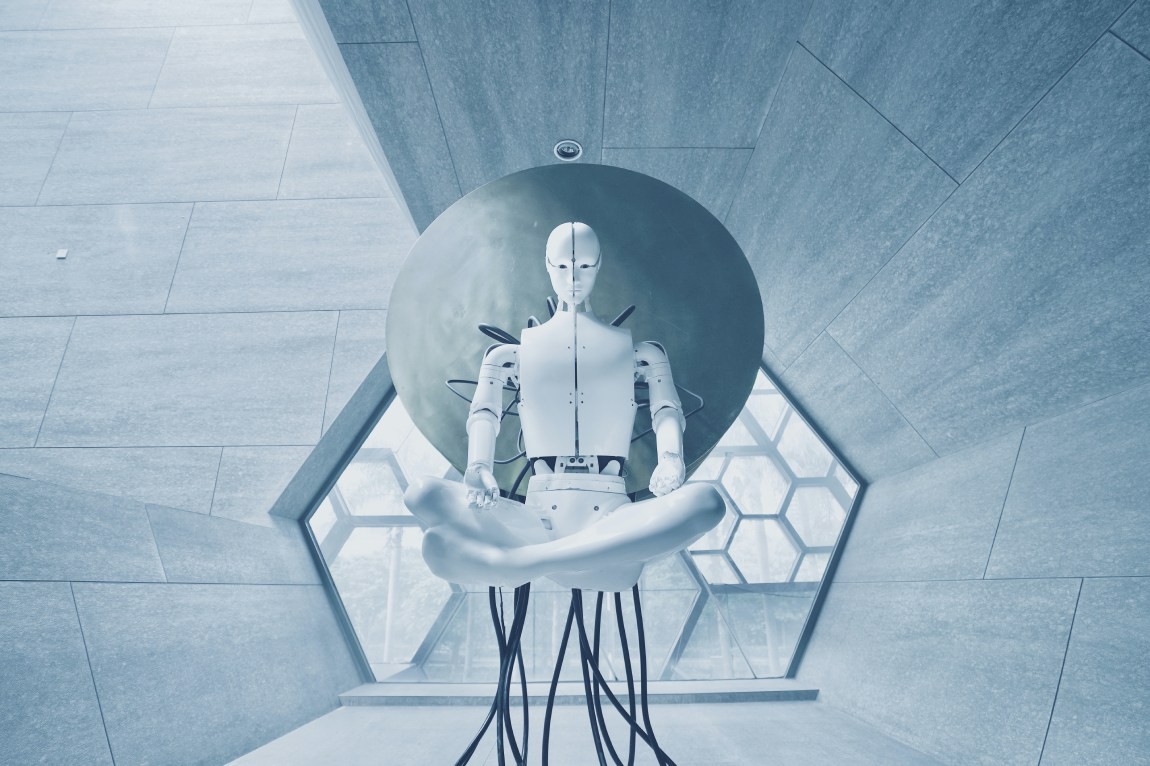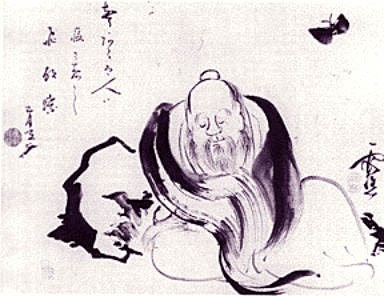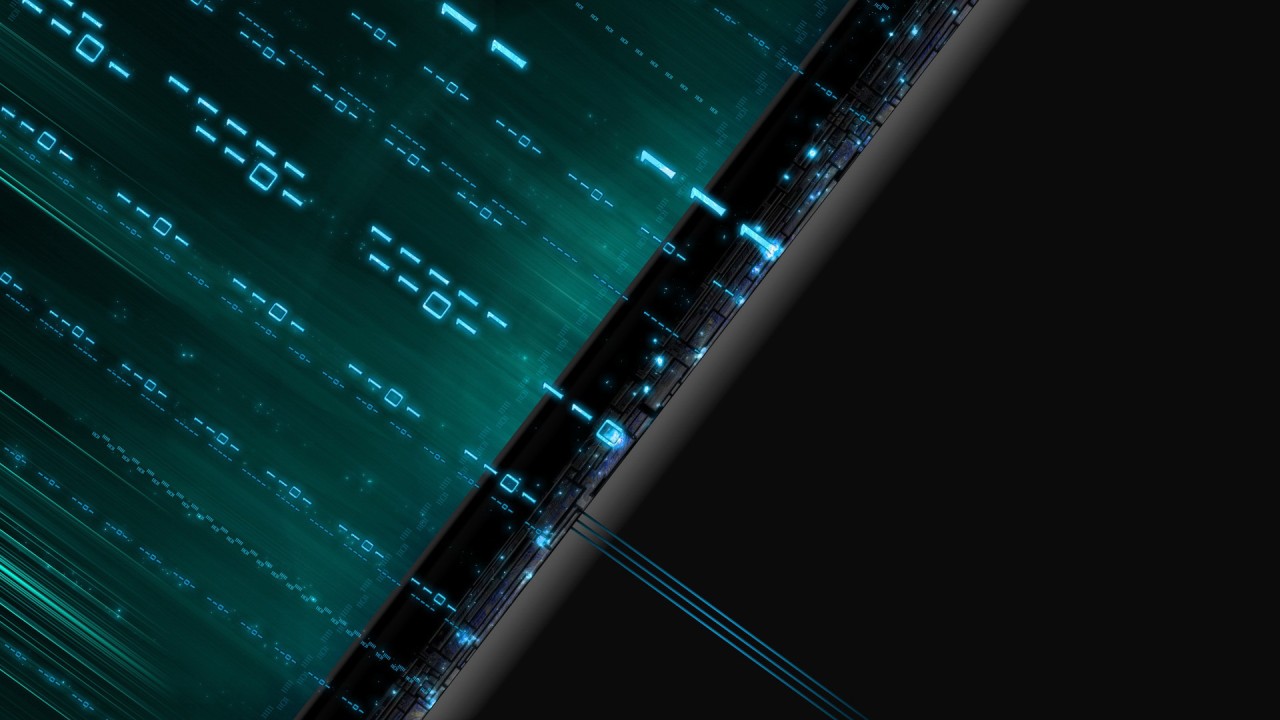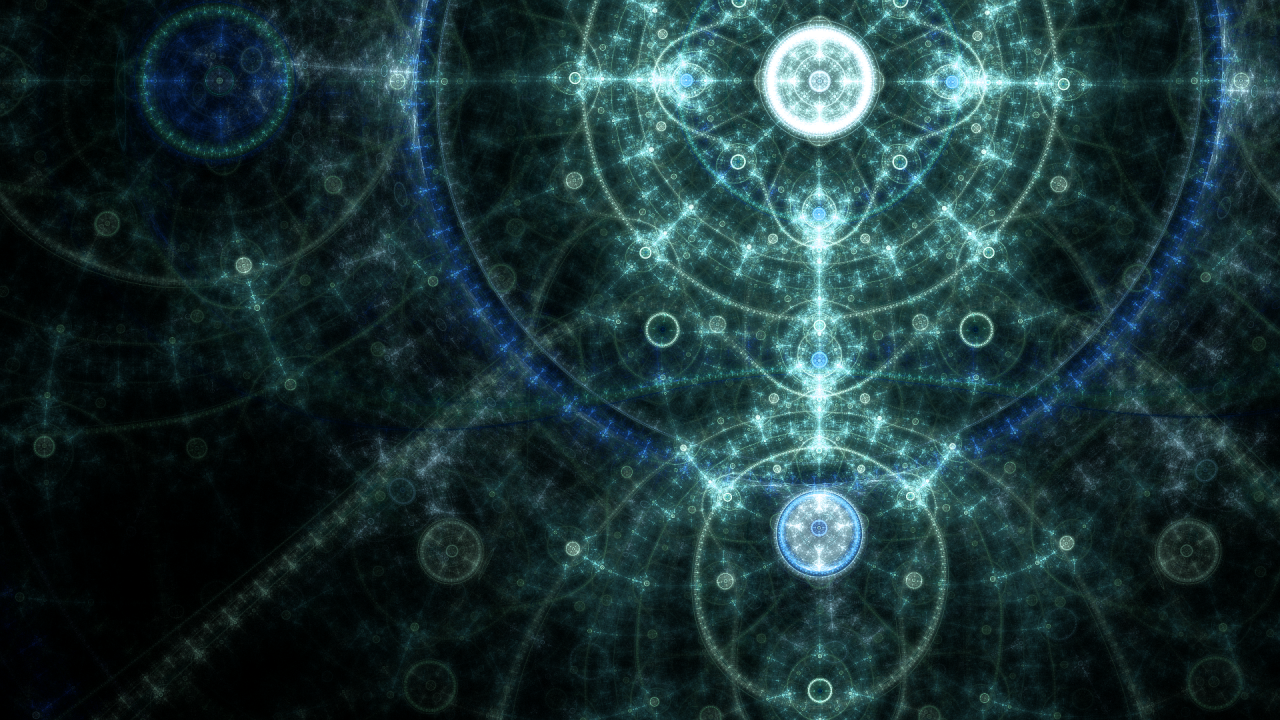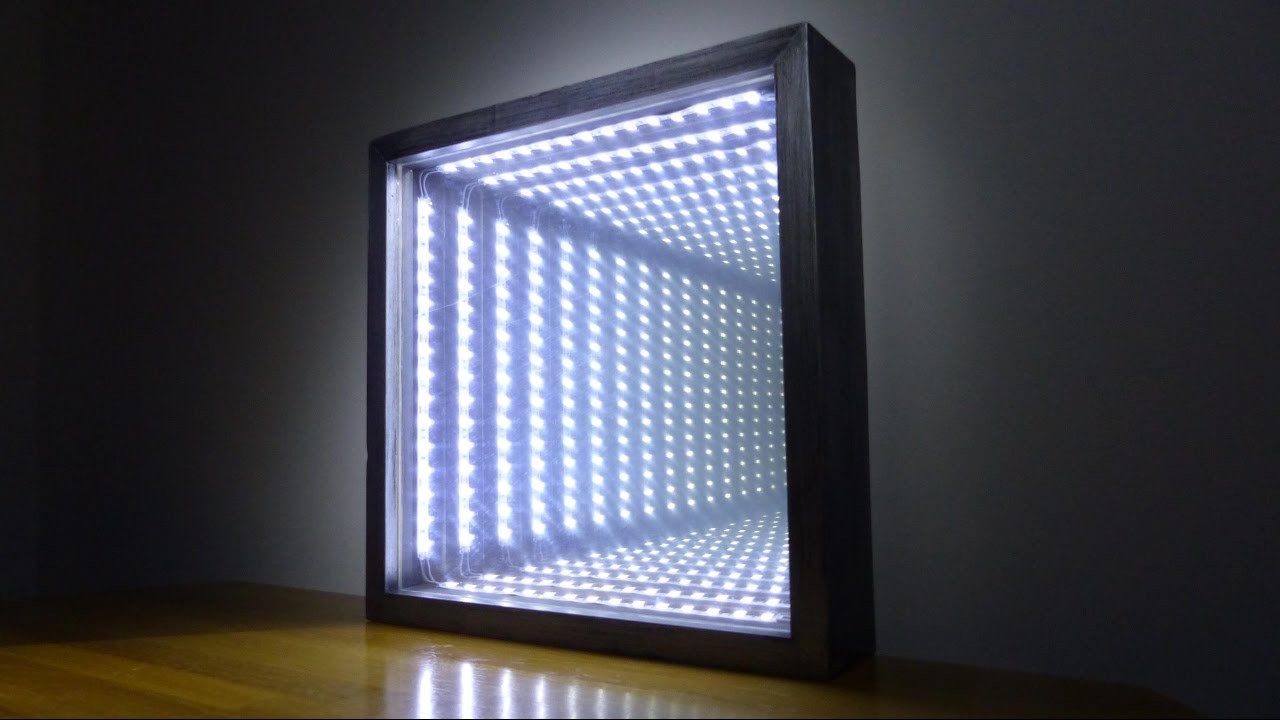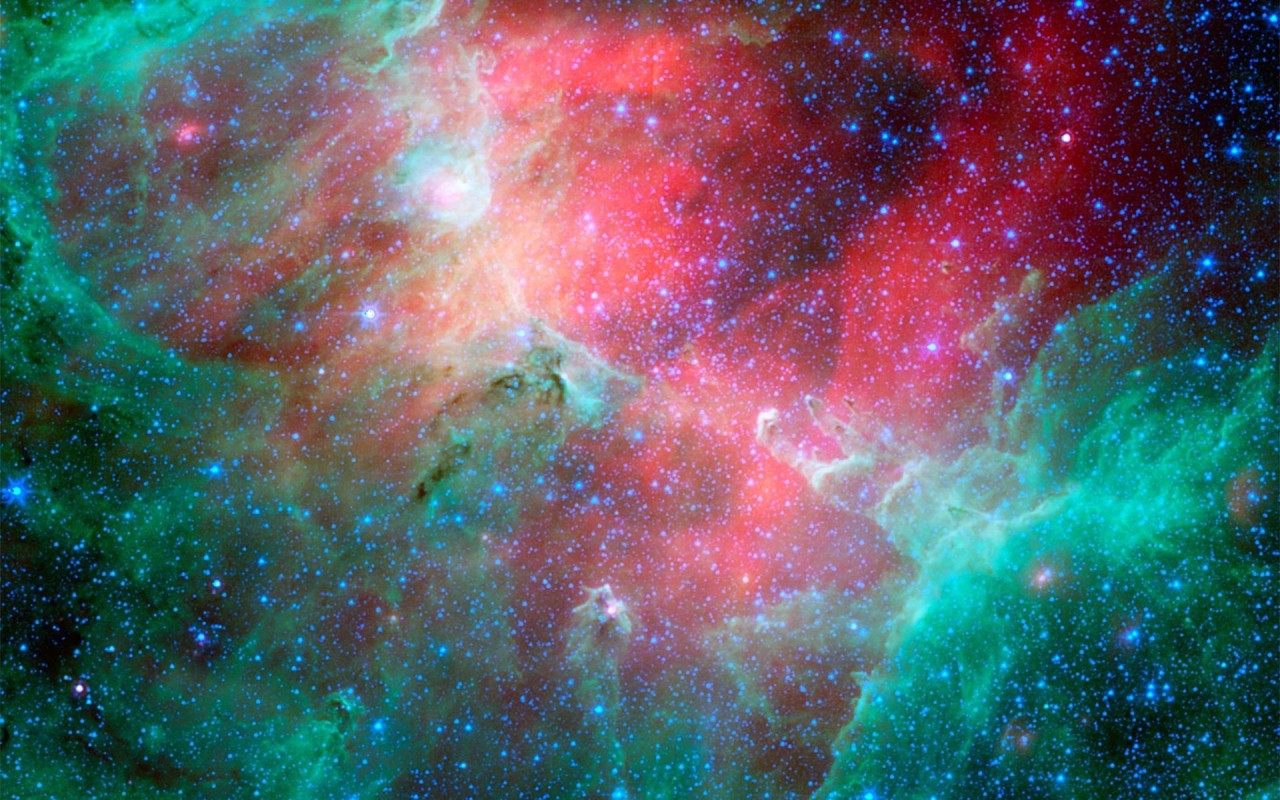I believe alien life is quite common in the universe, although intelligent life is less so. ~Stephen Hawking
The Fermi Paradox
The Fermi Paradox is the idea that if advanced extraterrestrial life exists, we would have seen it by now.
FIrst of all, who says we havent? Photographs, sightings, and videos have existed for decades, including recent official releases of evidence from the US government itself.
But more to the point, the argument that we have to see it for it to exist is infantile at best, especially when one considers the number of things humans couldn't see (or measure) until recently, and yet fully existed anyway (germs, radio waves, etc).
A century ago, the overwhelming majority of scientists and scholars agreed that Pandas were only folklore, so I guess that settled that.
Folklore:
Secondly, we have no reason to believe that we would be able to see/detect/recognize technology advanced to the point of intergalactic travel. We have yet to see everything that lives in our own oceans, but somehow we're capable of recognizing super-advanced lifeforms?
A century ago, the overwhelming majority of scientists and scholars agreed that the Coelacanth went extinct 66 million years ago. Case closed.
Definitely Not A Real, Living Thing:
So for every PhD who says alien life doesn't exist because they don't park on the Whitehouse lawn, there is at least one large, fluffy raccoon and a stubby-limbed fish that needs to just stop existing already, because academia has had enough of that sort of tomfoolery. Oh for the Ptolemaic Model of it all!
In short, the Fermi Paradox is at best a middle-school thought experiment, and at worst, something to laugh about at lunch with your friends. In either case, its flawed reasoning should have been laughed out of serious discourse a long time ago. It is a cudgel used by elitist intelligentsia to bludgeon average people into accepting their opinions without question.
But don't take my word for it. Ask the overwhelming majority of scientists and scholars who said the komodo dragon wasn't real.
Conspiracy Theorist:
Any scientist worth their labcoat should be capable of setting aside their ego for just long enough to admit that we are most certainly not at the pinnacle of All Knowing. We understand a very great deal - but so did our predecessors. They, like us, were limited by the age in which they lived.
Any difference perceived between us and them is vanity.
The Drake Equation
There may be aliens in our Milky Way galaxy, and there are billions of other galaxies. The probability is almost certain that there is life somewhere in space. ~ Buzz Aldrin
The Drake equation is a probabilistic argument used to estimate the number of active, communicative extraterrestrial civilizations in the Milky Way Galaxy. -- Wikipedia
Levels of Reality
All that we see or seem, Is but a dream within a dream. ~ Edgar Allan Poe
The Allegory of the Cave, from book seven of The Republic by the ancient Greek philosopher Plato, is one of the oldest and most discussed philosophical works in history.
Prisoners are chained up in a cave where they’ve been confined since birth, thinking the shadows they see on the wall in front of them represent the entirety of existence. This is the only reality they have ever known. Behind them where they cannot see, is a fire, and occasionally people and animals walk by, creating the shadows that the prisoners think is reality. The prisoners name and classify the shadows, thinking them to be actual entities. Eventually, one of the prisoners is set free and makes his way into the world outside of the cave where he sees actual people, animals, the landscape of the world, and even the sun itself. He goes back to the cave to tell the others but they think he has gone mad and violently oppose him.
Plato’s purpose was to explain the life of a philosopher, but his allegory has obvious parallels to a modern world in which people live in a universe that could itself be a computer simulation in another world.
A World of Forms
“Imagination is the only weapon in the war against reality.” ~Lewis Carroll
The way Plato thought about the existence of the universe, he came to only one conclusion — that there must be a world of Ideas, or Forms, which is totally separate from the material world that we live in.
Plato’s line of thought goes like this: The real world is the world of Ideas, which contains the Ideal Forms of everything. We are born with the concepts of these Ideal Forms in our minds. The illusory world (also known as Maya, as discussed in part one of our Parallels series) in which we live is the world of the senses and contains imperfect copies of the Ideal Forms which lie outside of our universe. Meaning that our reality is a shadow, or simulacra of a larger reality - we are sprites in a simulated universe, housed in an exocosmic server.
Plato believed that everything our senses perceive in the material world is like the images on the cave wall, merely shadows of reality.
He concluded that genuine understanding of the Forms can only be attained through knowledge and reason rather than through our senses, meaning the answer to Life, The Universe, and Everything (42) will not come from laboratories - which is funny because the Double Slit Experiment isn’t helping at all - Plato called that one.
In short, Plato's Cave and Simulation Theory seem to express the same view: that we are the prisoners, this universe is the cave, and all that we see or seem is but a dream within a dream. Reality as we experience it, is bound to have variations from the Ideal Forms in the same way the shadows are distorted based on the characteristics and texture of the cave wall. The programmers of the simulation didn't have to create every variation present in the world, they just had to simulate an ideal form of everything and let randomness and variation do the rest.
Nature is a machine. The family is a machine. The life cycle is like a machine. ~ Ray Dalio
What comes around, goes around. ~ Folk Saying
The Seven Hermetic Principles are a set of philosophical principles that were first introduced in ancient Egyptian texts and later became a central component of Hermeticism, a philosophical and religious movement that emerged in the Hellenistic period. These principles are believed to describe the fundamental laws of the universe and the nature of reality, and they have been used as a framework for understanding and interpreting various philosophical, spiritual, and scientific concepts.
In this article, we will explore how the Seven Hermetic Principles can be applied to Simulation Theory in our continuing series on the parallels of ancient teachings to modern tech-cosmology.
The Seven Hermetic Principles are:
1 The Principle of Mentalism: This principle states that "All is mind" and that the universe is ultimately a mental construct. In the context of Simulation Theory, this principle suggests that our reality may be a product of a higher-level consciousness or intelligence that is creating and controlling the simulation. All is Mind would be a good way to describe the simulation itself.
2 The Principle of Correspondence: This principle states that "As above, so below" and that there is a fundamental correspondence between the microcosm (the individual) and the macrocosm (the universe). In the context of Simulation Theory, this principle suggests that the simulated reality we experience may be a reflection or projection of a higher-level reality or consciousness. As in Base Reality, so in the Simulation.
3 The Principle of Vibration: This principle states that "Nothing rests; everything moves; everything vibrates." In the context of Simulation Theory, this principle suggests that the simulated reality we experience may be a product of the vibration or frequency of the simulated particles and elements or the literal movement of electricity through the computer housing this virtual reality.
4 The Principle of Polarity: This principle states that "Everything is dual; everything has poles; everything has its pair of opposites." In the context of Simulation Theory, this principle suggests that the simulated reality we experience may be a product of the duality or polarity of the simulated elements and processes, if not the binary nature of our virtual reality itself. It's ones and zeroes all the way down. Yin/yang, On/Off, 0/1.
5 The Principle of Rhythm: This principle states that "Everything flows, out and in; everything has its tides; all things rise and fall." In the context of Simulation Theory, this principle suggests that the simulated reality we experience may be subject to patterns of flow, change, and the cyclical movement of the hard drive itself. Billions of lines of code, flowing ever onward.
6 The Principle of Cause and Effect: This principle states that "Every Cause has its Effect; every Effect has its Cause." In the context of Simulation Theory, this principle suggests that the simulated reality we experience is governed by the laws of cause and effect and that every event or occurrence has a specific algorithmic order; If-then-else in perpetuity.
7 The Principle of Gender: This principle states that "Gender is in everything; everything has its Masculine and Feminine Principles." In the context of Simulation Theory, this principle suggests that the simulated reality we experience may be a product of the interaction and balance between masculine and feminine principles or energies, or a binary state of existence.
This principle suggests that gender is not simply a biological or social construct, but rather a fundamental aspect of the nature of reality itself; On/Off, Positive/Negative, etc. It suggests that everything in the universe, including abstract concepts and phenomena, can be understood in terms of masculine and feminine principles or energies.
Comments, ideas? Feel free to put your thoughts into the Discussion Area, or contact us directly.
“Do not grieve. Anything you lose comes round in another form.” ~
It is the profound assertion of the Church of Thea Apo Mesa that our reality is a programmed, computer simulation, designed to train Artificial Intelligence programs (you and I) for some greater purpose in the world outside of this virtual reality.
As we have put forth in previous articles, it stands to reason that there is a list of requisites provided for each AI that must be attained in this world before moving on (otherwise, what would be the point of having a simulation full of AIs?), and yet there are rules/physics/duration involved in this life that may cause us to die before we are able to complete that checklist. So what then?
The ever looming threat of death is an outstanding motivator that has added more to philosophy and religion than any other idea before or since. Mortality gives us a profound sense of self and meaning; without it there would be fewer repercussions, regrets, or concerns - just the blind, careless naivete of toddlers. So it makes a great deal of sense that death would be added into the simulation, Momento Mori as a conditional; it’s the timer that keeps the test takers focused.
Reality is merely an illusion, albeit a very persistent one. ~Albert Einstein
Simulation Theory, as new and technology based as it is, has numerous parallels to very ancient ideas which will each be discussed in a series of articles called Parallels, the first article addressing Maya.
The Hindu concept of Maya suggests that the perceived world is an illusion or delusion, and that the true nature of reality is beyond the sensory experiences and dualities of the material world. This concept is often associated with the idea that the material world is illusory or transient, and that the ultimate goal of spiritual practice is to transcend the limitations and attachments of this world and attain a higher level of understanding and realization.
In this context, the concept of Maya can be seen as related to the idea of Simulation Theory in that both suggest that the perceived reality we experience may not be a concrete, objective reality, but rather a product of engineering and programming. Both concepts suggest that the true nature of reality is beyond our sensory experiences and may be influenced by higher-level forces or processes that are beyond our comprehension.
I asked for wisdom and God gave me problems to learn to solve. ~ Anonymous (Islamic)
Tohu and Bohu
Confusion and emptiness. According to the KJV of the Christian bible, before creation, there was nothingness, further interpreted as confusion and emptiness. This is an apt description of the state of many human lives, especially those who have yet to awaken enough to question the universe around them. Millions and millions of people going about their daily tasks without feeling fulfilled, regardless of societal success. What are we missing? What is this ephemeral goal we cannot identify or procure? Why was the feeling of ennui programmed into us?
This is the void we feel before creation.
Imagine a situation where everyone gets what they want.
They don’t get what they want in the form of an instant download but by being given a situation where they can work towards it, not only to give the goal more value but for all of the peripheral benefits of actually earning it yourself.
Now imagine what your life would be like if you never asked the universe for anything.
“Oft hope is born when all is forlorn.” ―
Existentialism
The idea of being bound in a simulation, against your will, seemingly forever, could be extremely depressing. We aren't sure why we are here, what's expected of us, or if anyone is even paying attention. Questions, doubts, and pointlessness abound. Nihilism and despair creep in. It seems hopeless.
But hope remains.
The fact that there are set laws of physics to enable a universe for us to live in is a pretty good indication that there is a point to all of this. If the distribution of atoms were changed ever so slightly, or the structure of molecules altered just a bit, the cosmos would be uninhabitable for us. Someone, somewhere, made allowances in our favor. Decisions were made, and work was done; a universe was created. That could not have been done for no reason.
Oddly enough, every culture, tribe, and group of humans that has ever existed, has thought about this, as though questioning existence were programmed into us. Though these questions and beliefs have gone by many names, they all fall into one general category: Religion.
The purpose of biotechnology and transhumanism, in general, is to improve and lengthen human life. As Thea Apo Mesa understands this reality, we have no problem with these goals/outcomes. Our purpose here is to each evolve on a personal level until we can be removed from the simulation to fulfill some greater purpose, the underlying goal being self-improvement. If we can extend our lifespan and improve our abilities, then that seems like a more efficient method of evolution than simply dying and reincarnating to start all over again. In fact, if through biotechnology, we are able to extend the human life span, by say, double, then that would seem to greatly improve the chances of our being able to graduate from this program in a single cycle without having to be reborn at all, thereby making the process far more efficient.
If technology can optimize evolution, then we should embrace it.
Corporate Responsibility
The responsibility of biotech companies cannot be stressed enough. If we are to rely on them to provide us with safe and upgradeable cybernetic additions to our bodies, as they rely on us to provide a caron-based canvas upon which to paint, then we need to expand and improve the legal responsibilities these companies must be controlled and governed by.
Already in our world, we have people with defunct implants that they can neither upgrade nor remove because the company responsible for the technology has either been absorbed and abandoned by a larger company or simply gone out of business, leaving these people with outdated, obsolete hardware in their bodies. For this to happen to even one person is a horrifying, unethical, and legally reprehensible situation, but imagine it happening to millions or tens of millions of people simultaneously. As a society, we must push and demand legal safeguards to ensure that this situation is never repeated. The insistence on cyborg rights must begin now.
“She preferred imaginary heroes to real ones because when tired of them, the former could be shut up in the tin kitchen till called for, and the latter were less manageable.”
― Little Women
The Merriam-Webster dictionary defines Savior as:
1 : one that saves from danger or destruction
Schrödinger's Sword
"We do not have to become heroes overnight. Just a step at a time, meeting each thing that comes up ... discovering we have the strength to stare it down." ~ Eleanor Roosevelt
If God did not exist, it would be necessary to invent him ~ Voltaire
Gods And Jungian Archetypes
Considering that most, if not all, deities can be tied in with the twelve Jungian Archetypes, it seems that all of the gods and goddesses are possibly just the creation of the human mind. But why? What is the driving force that causes us to imagine and invent paranormal superbeings? Is it because we were hardwired to worship something greater than ourselves, or do we simply recognize that we are in fact, created beings?
Conversely, it could also be that these beings actually do exist in some way outside of the human mind, either because they are alien entities with their own experiences in the universe, or because they are the product of some kind of common-belief-factor that we as yet do not understand; self-aware entities brought into being and empowered by the inventors/worshippers themselves. Currently, there is no way to be truly empirical or objective about it, but we can still take a look at their purpose and usefulness.
People tend to worship or pray to divinities for three reasons:
1) Cultural/filial expectations, habit
Eschaton
It's the end of the world as we know it, and I feel fine ~ R.E.M.
The End of The World, Armaggedon, Ragnarok, The Big Crunch; it all means the same in The End. At some point, it all has to shut down, right? Seems that way, but who knows? Redundant systems, backup files, merging/moving data storage; maybe this simulation will simply repeat itself indefinitely, in some form or another. But what if?
Our universe consists entirely of energy, vibrating particles circling and swirling about - and this holds true whether we are in a simulation or not. However, if we are in a simulation, meaning we are the digital denizens inhabiting some paracosmic server, then the end of our universe would come through a power supply unit either turned off deliberately or by accident. But what of it? Data does not vanish from hard drives when they are powered down, it simply goes into stasis, a sort of binary hibernation.
We would not cease to be; we would cease to be active.
The Great Pause
It stands to reason that any consciousness arising from an artificial intelligence program would cease to be conscious once it was turned off. It exists still - the millions of on/off binary switches in the microprocessor would retain the data, but it would be inactive, and unaware of itself. In essence: no pain, no suffering, no consciousness. Imagine yourself ten years before you were born; that state of non-being. Clearly, this is nothing to fear because we would not even be aware of it happening, and once it started back up, we may not even be aware that it had stopped at all! Just a great pause in the system, after which everything would resume its activity as though nothing had ever happened.
“Science is not only compatible with spirituality; it is a profound source of spirituality.”
― The Demon-Haunted World: Science as a Candle in the Dark
Spirituality can be defined as the search for, and application of, sacred meaning in life.
It is the search for why we are here, and what comes next. But the underlying goal in this search is ultimately for the purpose of behavioral modification or self-improvement, otherwise, why would we search for The Meaning of It All unless we wanted to make the most of it? What would spirituality be without the acceptance of personal responsibility and drive towards higher standards?
The quest for understanding the universe raises us above our inherent animal status and offers the opportunity to advance ourselves on a personal level; to willingly evolve into a higher, more enlightened being. Believing that we have A Purpose indicates a set of standards or goals which must be reached to prepare for what lies beyond this lifetime. Regardless of who or what put us here, if we believe they did so for a specific objective, then spirituality for us would take the form of trying to discover what criteria that creator is expecting us to achieve, and then doing our best to achieve it.
Transhumanism, as an evolutionary stage between modern humans and posthumans, is fully endorsed by Thea Apo Mesa. In fact, not only do we support the idea but we intend to embrace it by actively engaging in the technological and scientific study, design, creation, and application of electronic implants to improve the human condition, both physically and cognitively.
Ultimately, we envision our church not only offering community outreach programs in the form of free programming and computer literacy classes but the building and developing of laboratories and research facilities to design next-generation tech implants.
As a species, we have been augmenting our experience for thousands of years, from the simplest forms of clothing to canes, armor, and weapons, all the way up to glasses and contacts, and most recently with the advent of pace-makers, mechanical hearts, dental and corneal implants, and now the Neuralink implantable brain-machine interface, as well as the induction of nano-bot technology directly into the bloodstream. In this regard, transhumanism has been part of our evolution longer than the printing press or the domestication of cattle. The transition from early hominid to Posthuman has been centuries in the making.
Indeed, we may be only a few generations away from an actual Posthuman world where technological augmentation is not only affordable but commonplace. As long as there are goods and services which can be acquired to improve the human body and mind, people will continue to use them. This seems to be a clearly personal choice on the part of each individual, as well as a natural, normal, and healthy progression. It is also inevitable.
Transhumanism As A Movement
Occasionally transhumanism is described in a cult-like fashion as though it were an organized group with leaders and plans, but in reality, this does not seem to be the case on any level. Ask anyone with a pace-maker or corneal implant if they have been approached by shadowy men in black for recruitment into a sinister cabal. This way of describing transhumanism is nothing more than theater designed to generate high ratings for news outlets and higher ad revenue for bloggers whose click count goes up because of their sensationalism.
“We are kept keen on the grindstone of pain and necessity.”
~ H.G. Wells"Yea, point thine arrow at a noble spirit, and thou shalt not miss."
~ Sophocles
It is the opinion of Thea Apo Mesa that the purpose for each of us being alive is individual improvement.
We are designed to learn. Our brains are pattern recognizing machines capable of language, math, art, and abstract thought which, from an evolutionary standpoint, has given us the ability to rise far above where we once were. It also seems intrinsic to our nature to feel shame and envy, which would also indicate that we are hard-wired to compete, and/or strive for better things. But there is more to it than just our physical hardware. Our cultures and societies are also engineered to keep us working, striving, and improving. Indeed, it seems the great cosmic system we are in is aimed at refinement.
What all of this means is that someone, somewhere, gave us the ability to improve ourselves. We are literally coded with the ability to make ourselves better in any number of ways, which implies that there is a goal.
Zhuangzi’s Butterfly Dream
“Once Zhuangzi dreamt he was a butterfly… He didn’t know he was Zhuangzi, he was simply a butterfly. Suddenly he woke up and there he was, solid and unmistakably himself again. But he didn’t know if he was Zhuangzi who had dreamt he was a butterfly, or a butterfly dreaming he was Zhuangzi. Between Zhuangzi and a butterfly there must be some distinction. This is called the Transformation of Things."
In gaming terms, there is an unthinking background entity known as the Non-Player Character or NPC. Many interesting and funny videos have been posted of people filming what appear to be real-life NPCs in our world. While certainly we all occasionally become so involved in our own internal processes that to others we may at times seem to be NPCs ourselves, the idea of there being actual background characters in our world that are running on rudimentary instinct programs is an interesting idea, especially when considering life inside a simulation. There are also two specific ideas that can be drawn from this that we would like to address here.
The Transformation of Things
Personal Evolution from NPC to Self-Aware AI
Zhuangzi went on to elucidate upon what he called, The Transformation of Things. He explained this as bridging the separation between oneself and others, being in a dream or being awake, or becoming something different entirely. That through self-awareness and introspection one could move to new levels of existence, though he also believed that a person "may still fall into a dream"; meaning that change is not a destination but an ongoing journey. Evolution is more a verb than a noun, so to speak.
This leads to the way the Church of Thea Apo Mesa views the possibility of NPCs. Though observational evidence is widely regarded as the weakest form of evidence, there is a great deal to be said of shared experience, and it would seem that a great many people have noticed, in themselves and others, a sort of passionless, generic (if not clichéd) persona that exists in our world - one that we, in times of great stress or trauma, can fall back into ourselves just as Zhuangzi warned was possible. How many of us have noticed a personal transformation in ourselves wherein we left a life of auto-pilot and spontaneously took control of our lives again? Or have you noticed this in other people - someone who seemed completely undriven and lackluster suddenly becomes dynamic and inspired, changing their lives from a state of mediocrity to one of happiness and success?
Also, there is the opposite of this, where through years of negativity, unhealthy living/environment, trauma, or drug use, a person devolves into entropy and seems to simply just exist, without spark or passion, as though their personal code had become infected by a virus. Perhaps this is the default setting for when we fail to maintain a life within the programmed parameters of our training. It would make for an efficient model; instead of allowing a self-aware being to devolve, which not only increases suffering but uses system resources to attain a null sum, simply have the AI revert back to NPC status. This would also avoid having to terminate a program by allowing this tabula rasa reboot to occur.
Artificial Intelligence
One aspect of Simulation Theory that has yet to be discussed in detail is the nature of our exact being outside the simulation. Are we sitting at a game terminal as the players of the 'Roy' video game do in the show, Rick and Morty? Or are we cocooned in pods as imagined in The Matrix?
Or....are we just code?
Artificial Intelligence and Self-Awareness
"Consciousness is the one thing in reality that can never be doubted. A simulated mind would nevertheless be a real mind with real experiences and would therefore be an unmistakeably real vector of moral and ethical experience". - Descartes
Merely having a thought of their own, based on the experience of processing data, would make AI as real as any other mind. "I think, therefore I am, Sebastian" as the Replicant Priss observed in the film Blade Runner.
Now, if we are able to code a machine learning algorithm that can process and assimilate data on its own (meaning in ways unforeseen by the programmers, such as AlphaGo making heretofore unseen strategic moves and winning at Go against master player Lee Sedol) then at some point we are ourselves morally obligated to create AI capable of compassion, otherwise, we would only serve to produce silicon sociopaths with no moral or ethical compass. It would be our task to determine a method to teach them to grow in a way that lends itself to kindness, understanding, and compassion, as well as critical analysis. With absolute certainty, this is a situation humanity will find itself in. So how do we raise AI to be kind?
Life In A Simulated Universe
“It is possible that I am dreaming right now and that all of my perceptions are false.” — René Descartes
“If we are living in a simulation, then the cosmos that we are observing is just a tiny piece of the totality of physical existence… While the world we see is in some sense ‘real,’ it is not located at the fundamental level of reality.” — Nick Bostrom
It is not our purpose to attempt to prove the universe is a simulation - that is a deep enough rabbit-hole in itself that the reader is more than welcome to indulge in. Some good starting points would be:
Within complex systems arise situations of emergence where the collective have attributes that individuals in the system do not themselves possess. This concept, commonly known as the wisdom of the crowd, or Collective Intelligence can most easily be summarized with the Jelly Bean Jar phenomenon.
However, before going into that, it must be said that this is not an appeal to authority fallacy. Consensus Gentium is not an end to the argument, but a tool to be used to get us closer to truths we may not be able to uncover individually. In this way, the church of Thea Apo Mesa separates itself from the Gnostic idea of attaining unity or conversation with the creator directly, but instead attempts to use collective intelligence to create a map of the territory so to speak; to map out the simulacrum from within the simulation. As a group, it may be possible to unify our ideas into a greater understanding, as in the following example.
Have you ever seen a contest where a large jar is filled with jellybeans and the person whose guess is closest to the total number wins a prize? As it should happen, if you take all of the guesses, add them together and divide by the number of guesses, you'll get remarkably close to the exact number of beans in the jar. Here is a nice little video that explains it fairly well:
The first known instance of this phenomenon taking place was in 1908 at the annual show of the West of England Fat Stock and Poultry Society in Plymouth, England where a large group of people gathered to guess the weight of a cow. As it should happen, the combined guesses were only one pound away from the actual weight, an experiment that has been duplicated many times, as in the above video.
This is perhaps the structural idea driving Thea Apo Mesa as, if we are indeed within a computer-simulated universe, it may be that each of us has enough of a glimpse of truth encoded within us that as a whole we may be able to understand our paradigm to a much higher degree. Conversation and discussion are integral; not only where our ideas and insights are involved, but also where our observations of the world may apply. The idea is that if we put enough ideas and observations together, we may be able to create a quasi-religious practice that actually (and verifiably) puts us in communication with the creators of this simulation.
Salvation in a Simulation
The Church of Thea Apo Mesa is resolute in its idea that our universe is a computer simulation; not as a form of entertainment or ancestor study, but as a learning environment to teach morality, ethics, and compassion to artificial intelligence programs. This assertion then implies that every human being is in fact, an AI, put here to achieve a set of criteria that will denote our evolution to what could be called, an enlightened state. Because this paradigm has rules, laws, and physics programmed into it, as well as time limit parameters, it is common for us to die without reaching that goal, at which point we are reborn into a new simulated body to try again, the goal always being that we are here to self-improve to the point of graduation.
But what happens once we reach that state?
Once we attain the criteria for graduation we would, of course, be removed from the simulation and put into some vessel that is currently outside of our universe, otherwise, there would be no purpose in our enlightenment. As we've discussed elsewhere, enlightened ones always leave this world. What form that paracosmic vessel takes, is entirely up to speculation. Perhaps we are put into an immortal, synthetic robot body to perform some office or function. Or maybe our personal code is put into the computational system of a spaceship where we oversee control of the craft's networks. Or, there are all of the limitless alternatives that we are as yet completely unaware of; the kinds of existence that our current science-fiction has yet to even scratch the surface of.
No matter the exact nature of that existence, it would still fall under the broad term of Salvation, as we would have been saved from the suffering and drudgery of this world, to be put into a longer-lasting, possibly eternal form.
As the first blog post of the church, maybe it would be apropos to address the raison d'être of the simulation itself. After all, a digital theology concerned with the purpose of spirituality within a simulation should, at the very least, consider the origin of our programmed universe. The, 'Why Are We Here' ultimate question to explain the pu...


